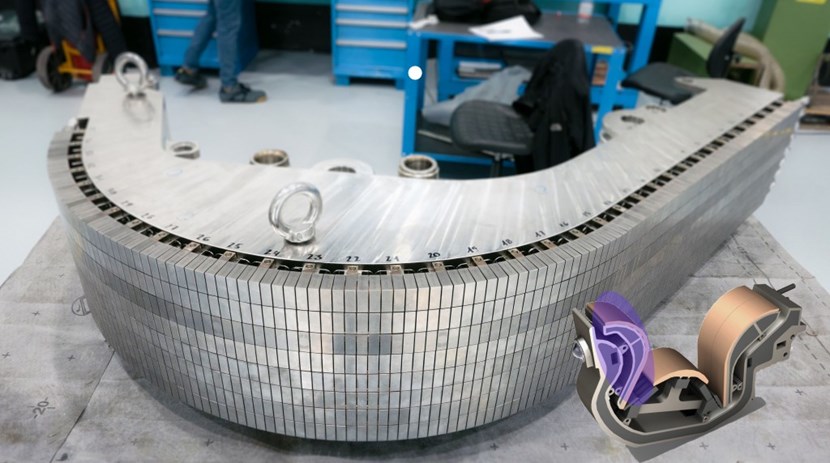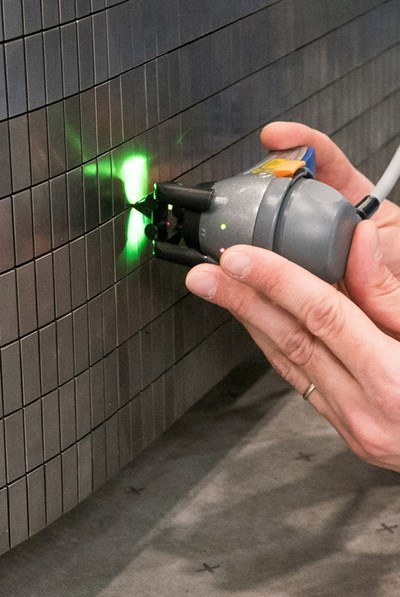
This full-scale prototype of the inner vertical target was produced by European supplier Ansaldo Nucleare as part of a manufacturing qualification program. The inner vertical target (highlighted, bottom right) is one of three plasma-facing components assembled on each divertor cassette.
In ITER, the hot plasma can only be maintained if waste gases and impurities are continually exhausted from the machine. The component in charge of the exhaust process is situated at the bottom of machine—composed of a supporting structure in stainless steel and three plasma-facing components, the divertor will face heat fluxes of 10-20 MW per square metre. The bombardment will be particularly intense for the vertical targets, which are positioned at the intersection of magnetic field lines.

Approximately 300,000 individual monoblocks in tungsten will armour the divertor plasma-facing components. Each one must be shaped and positioned precisely; in this photo, metrologists from the European Domestic Agency are performing dimensional checks.
Tungsten, a shiny, silvery-white refractory metal that has a high melting temperature (3400 °C), has been chosen as the armour material for the plasma-facing components and prototyping and testing phases are underway for the dome (Russia), the outer vertical target (Japan), and the inner vertical target (Europe) to ensure manufacturability and performance in line with challenging ITER specifications. The maximum expected temperature on the tungsten surface of the inner vertical target will be about 1000 °C in normal operating conditions and 2000 °C in off-normal conditions.







